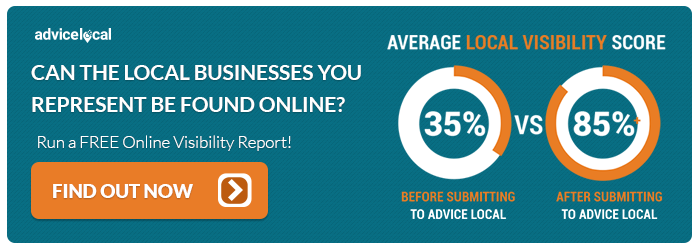To get local customers, you need a content marketing plan that is local focused. It’s time to review your activities. Assessing whether or not your efforts have delivered the results you expected is a necessary task. Even though many businesses regularly update their Facebook page and Twitter account, most do not know how to measure the return on their content marketing investments. A business must know what a “like” is worth, and how about the value of a “retweet” or a comment on the company blog?
Here’s the plain truth: you can’t make much headway in evaluating content marketing without first having a clear content marketing plan. For some business owners and managers, creating such a plan does seem overwhelming, and it doesn’t help that your email and social accounts bulge with messages promoting this or that blog post, eBook, tip sheet or seminar, each containing different ideas and advice on how to create a plan. This might seem too big to tackle but don’t worry, because there’s a solution …
Today I am glad to share my fast and friendly, DIY format plan for a basic content marketing strategy. True, it’s yet another piece of advice, but I promise that this one will make your content marketing focused and rational. This information will prepare you to efficiently separate the useful from the bluster in those emails that arrive each morning – and it won’t take too much time.
Five Steps to a Content Marketing Plan
1. The Goal – Identify the Action You Seek.
Note that “action” here means an observable behavior, not an attitude or a feeling. Got that? OK – now ask yourself this: What do I want people to do? Be specific! For instance, if you’re a florist with an attractive storefront you might want to generate more street traffic. If selling a service such as graphic design, you may want to draw potential customers to an online portfolio so they can see your work.
2. The Target Audience – Identify Who Can Give You the Action.
For the florist, people walking down his street or living near his shop are the ones who can give him what he wants, which is to come by and visit his store. For the graphic designer, it’s people who are online looking for graphic design services. (Remember, the target audience has specific characteristics. Avoid thinking of your audience as the “general public.”)
3. The Channel – Decide How to Reach Your Audience.
The florist, or indeed anyone with a physical store, is often best served by using local search. It’s a way to help people discover the shop when they search Google (or another search engine) for a florist. Businesses must also understand that local is being supercharged by mobile, and they really cannot be separated. 90% of U.S. customers now carrying mobile phones (I’m one of them, and willing to bet you are too!).
As Street Fight Insights puts it: “… the more ‘local’ a company is, the more there is to lose by not having a mobile plan at play.” The florist might also want to take out an ad in local shoppers and weekly newspapers, or even create an attractive poster to tack up on bulletin boards around town. (Yes, sometimes low tech still works.) The graphic designer could create a gorgeous Facebook page and then promote it with a few low-cost “boosted” posts.
4. The Content – Determine Your Offer.
Ask what will motivate the target audience to act when they see your Facebook page or find you through local search? Pay attention, because the answer to this question may cause you to rethink how you define your target audience. For example, the florist thought his audience consisted of people living and working near his shop. While that is logical, it isn’t focused. In fact, unless a person who lives in his area wants flowers, they are unlikely to visit his store. So the florist is actually better off refining his target audience to be those who live or work nearby AND who are looking for flowers. He might also stretch that a bit to include those who live/work nearby and who also need a convenient gift.
That refinement widens his target market and provides more opportunities for him to get creative with content marketing. This content could highlight the ease and speed of acquiring a quick hostess gift by stopping into the florist’s shop to buy flowers on the way to a dinner party. (Of course there is a great deal more to this step once you get deeper into the finer points of marketing strategy, but to get you started this will do!)
5. The Evaluation – Decide How You’ll Know If It Works.
This is the key question to ask at the beginning of content marketing planning. It is why we want to express the desired action in behavioral terms. If more local people come into the florist shop, then it worked, right? If more potential customers view the graphic designer’s portfolio, it worked. If the goal was achieved, was it due to the content marketing or some other reason? How do you know? That’s the challenge of the evaluation stage: connecting results to your content marketing activities.
In the case of the graphic designer it’s not too difficult to make the connections. Using free or low-cost metrics, she can track the numbers and demographics of people who first visited her Facebook page (where she offered her content) and then came to her website (where the portfolio is hosted). Further, she can identify which pieces of content were most effective in driving traffic to her site, and then refine her content marketing efforts going forward.
For the florist, things are more complicated. In planning his content, he will want to include ways of tracking consumer activity. He might, for example, include a different promo code in each piece of content so that he can identify the customers that came to his shop as a result of a particular search query. And as noted above, sometimes low tech still works: the florist might simply ask a purchaser how they heard about his shop!
Content marketing is just one component of a much bigger local search plan! Learn more about how Advice Local can help today!
This post is part 1 in a five part series. Here’s the links to the other four posts:





4 thoughts on “The Five-Step, Quick Start Local Content Marketing Plan”
Comments are closed.